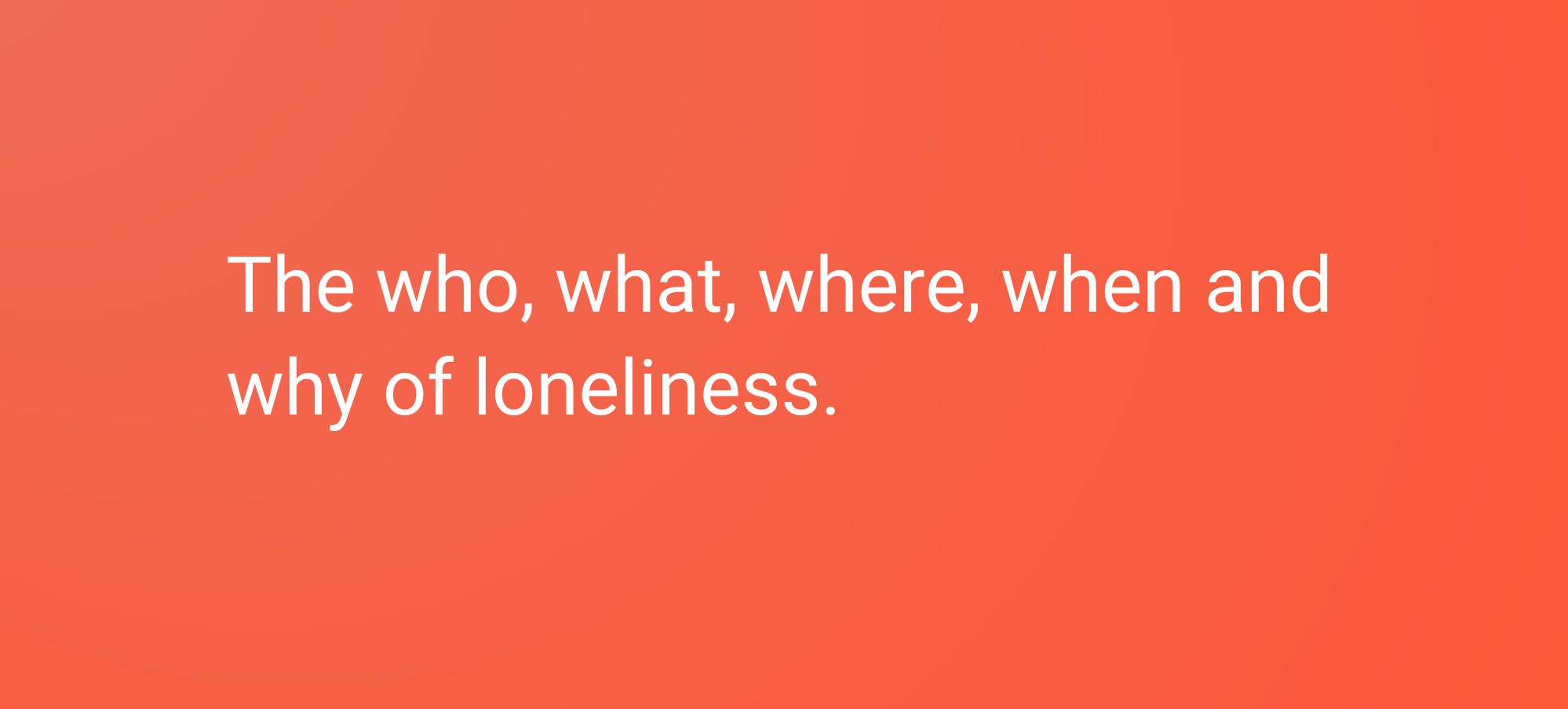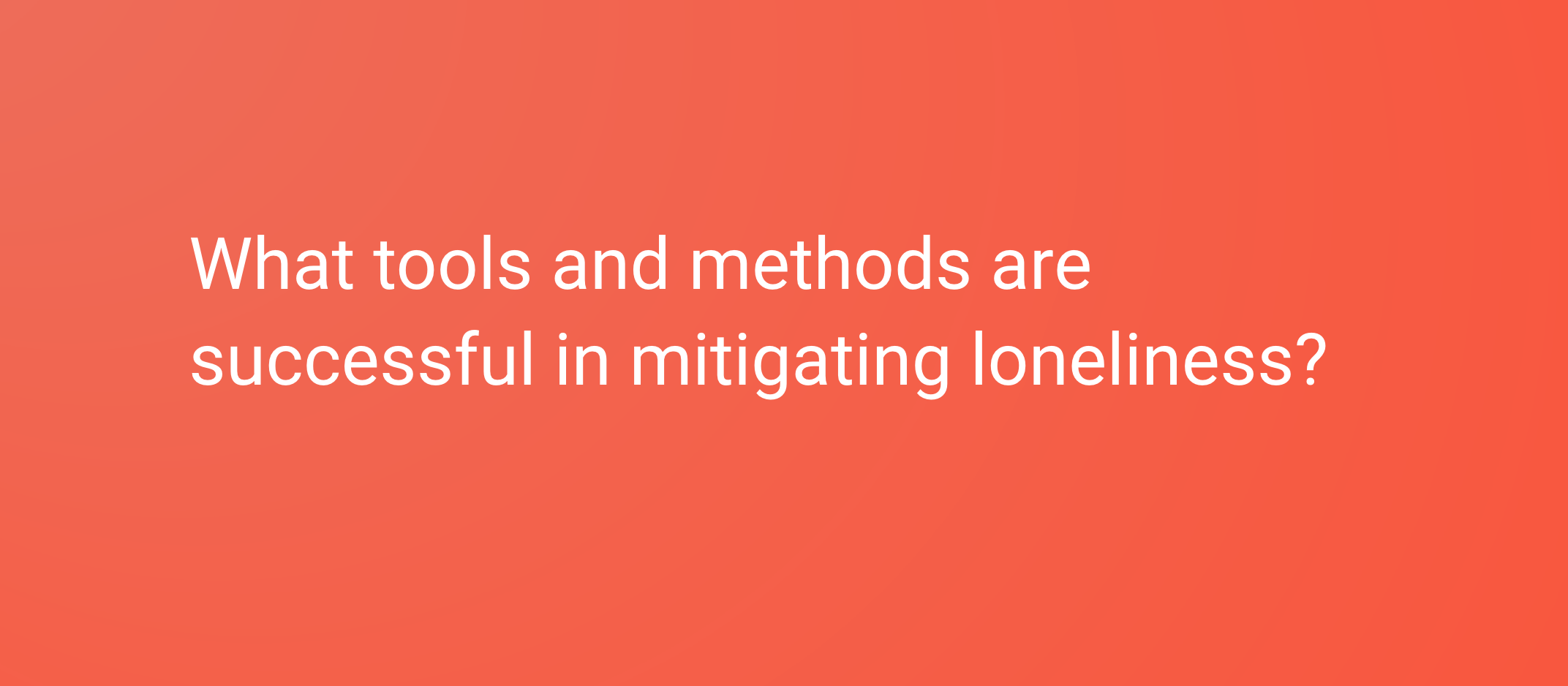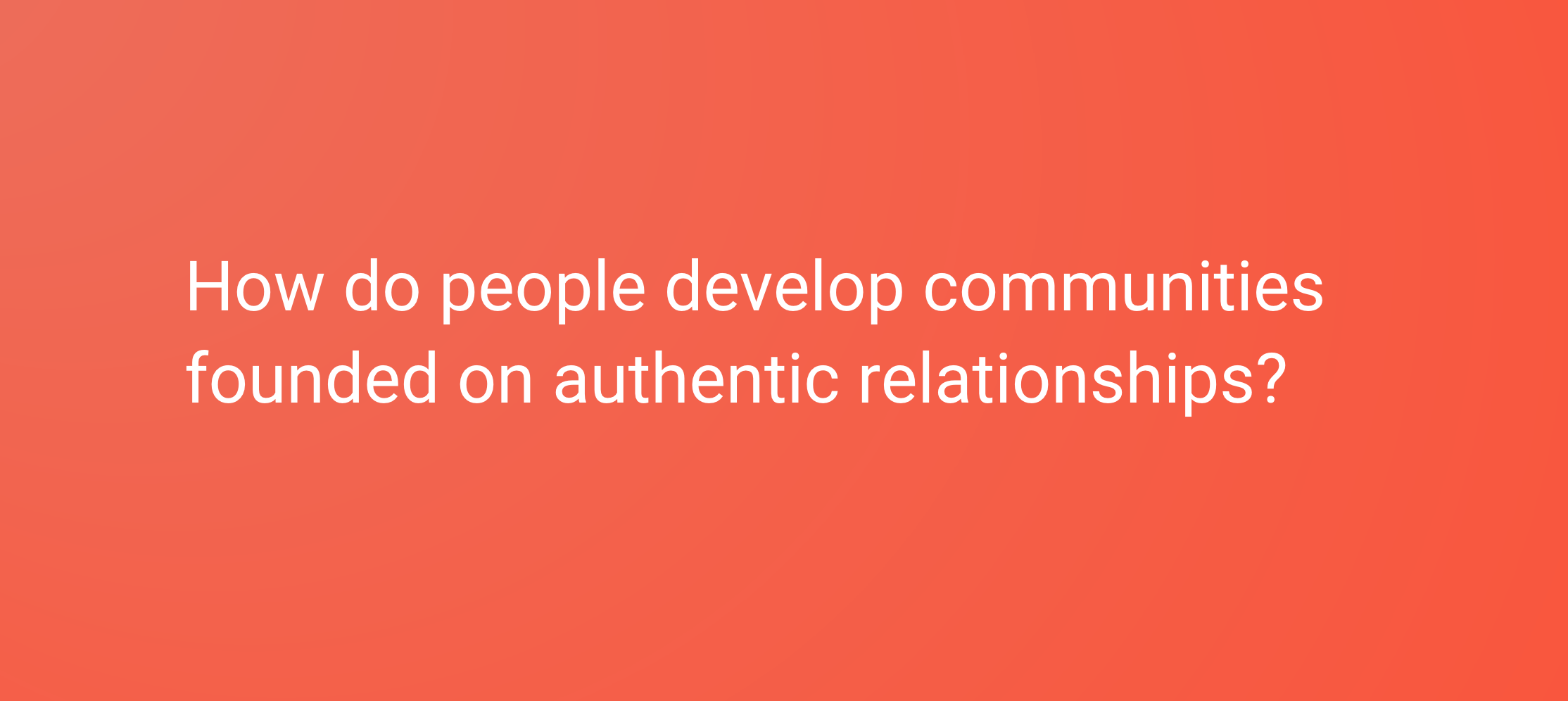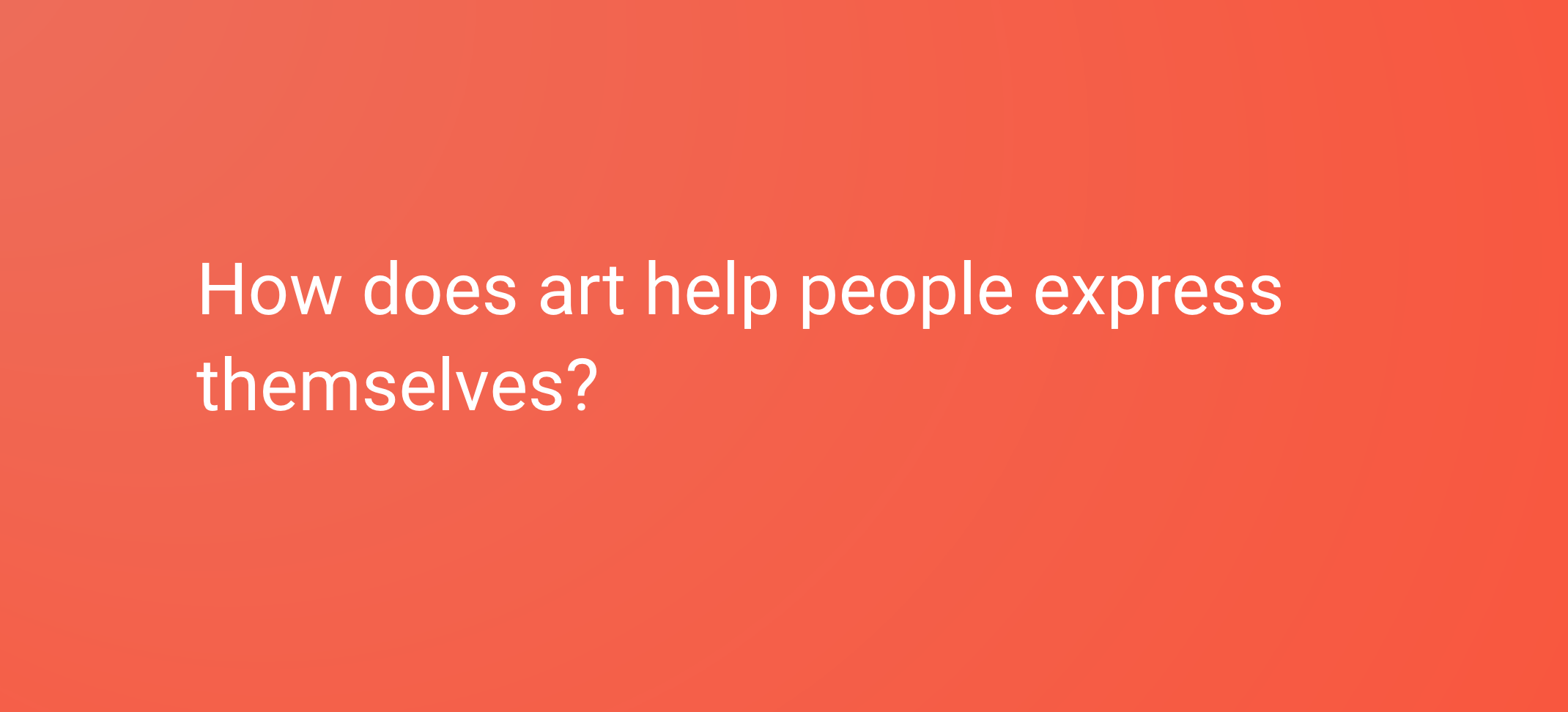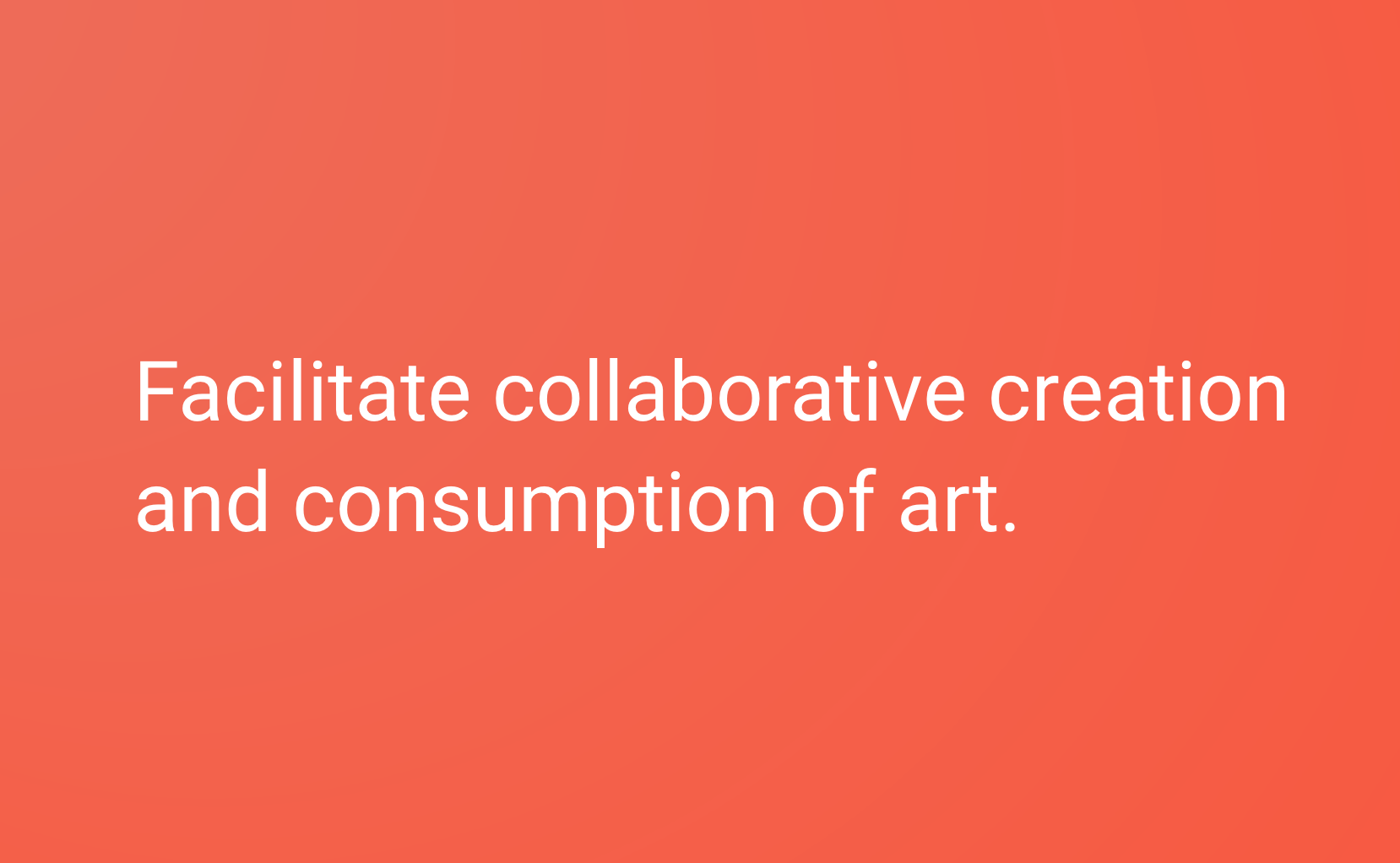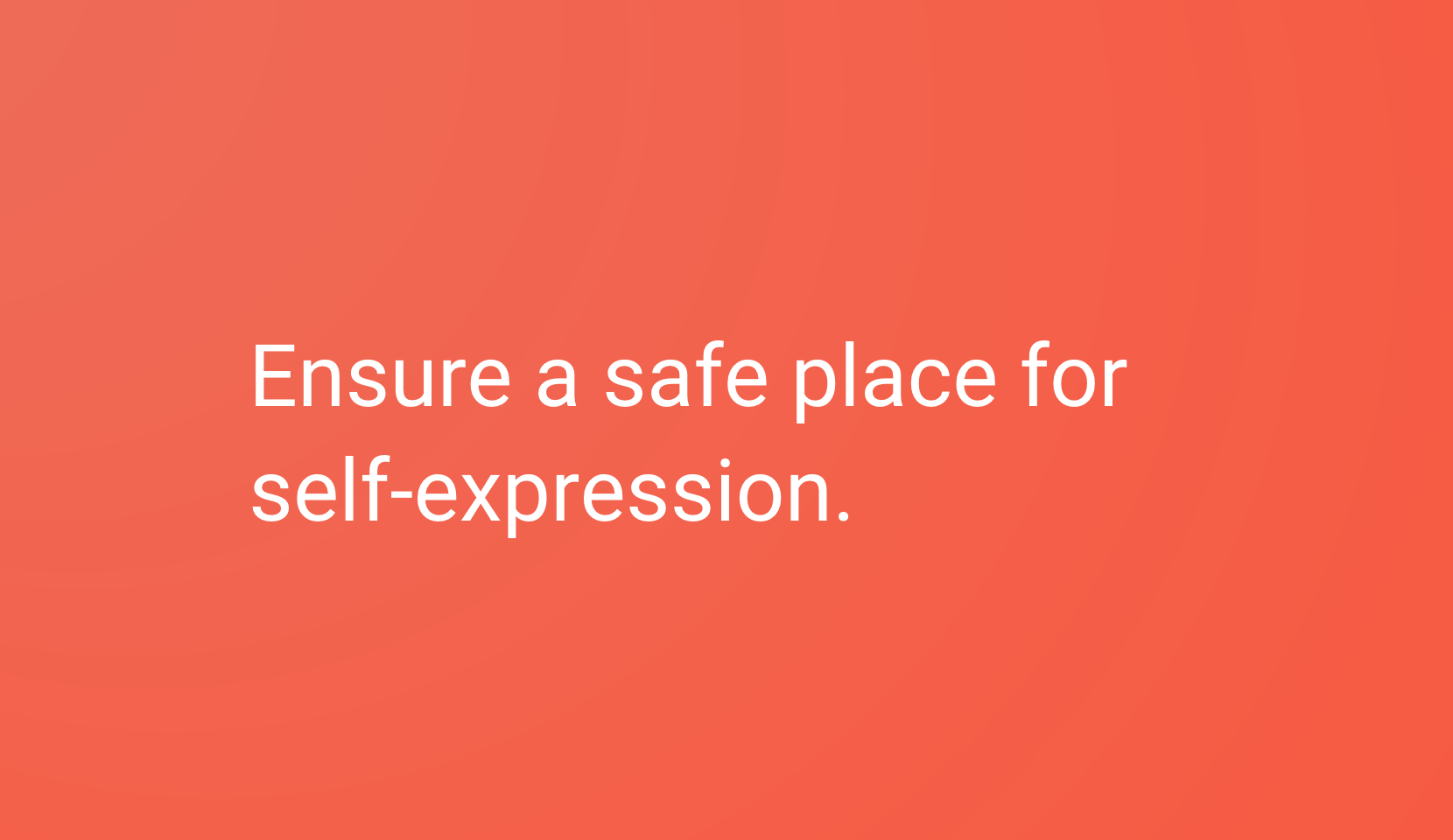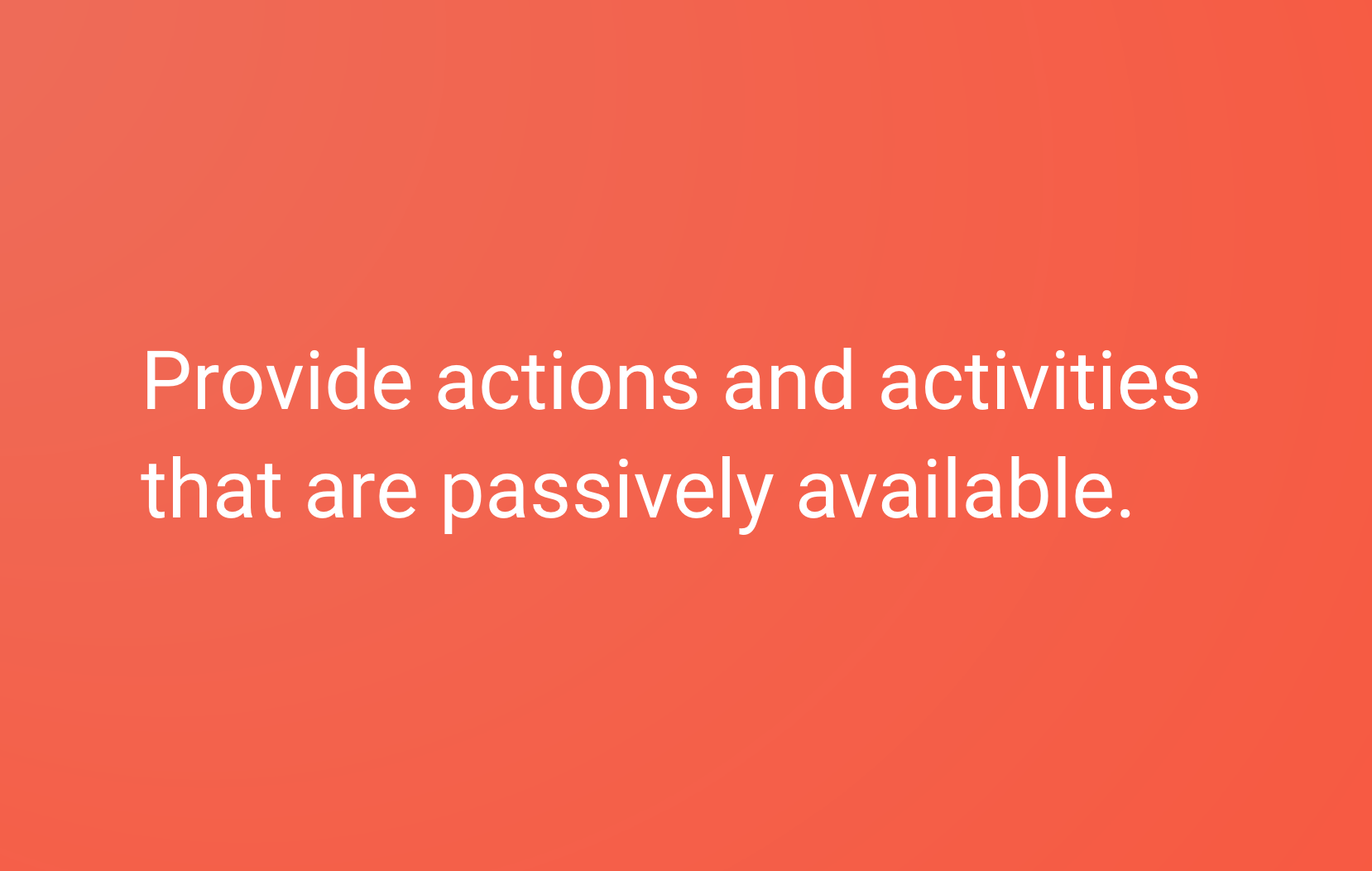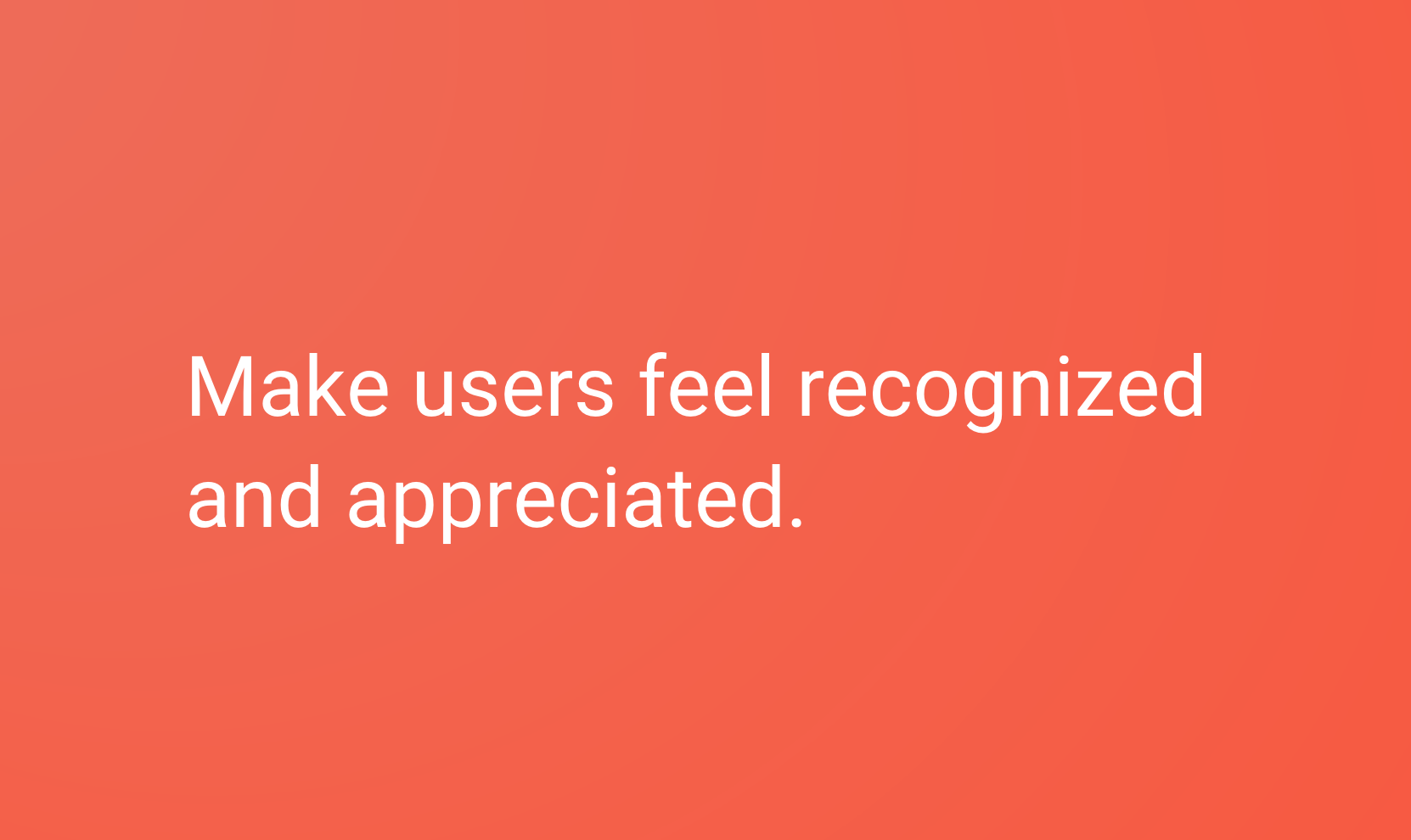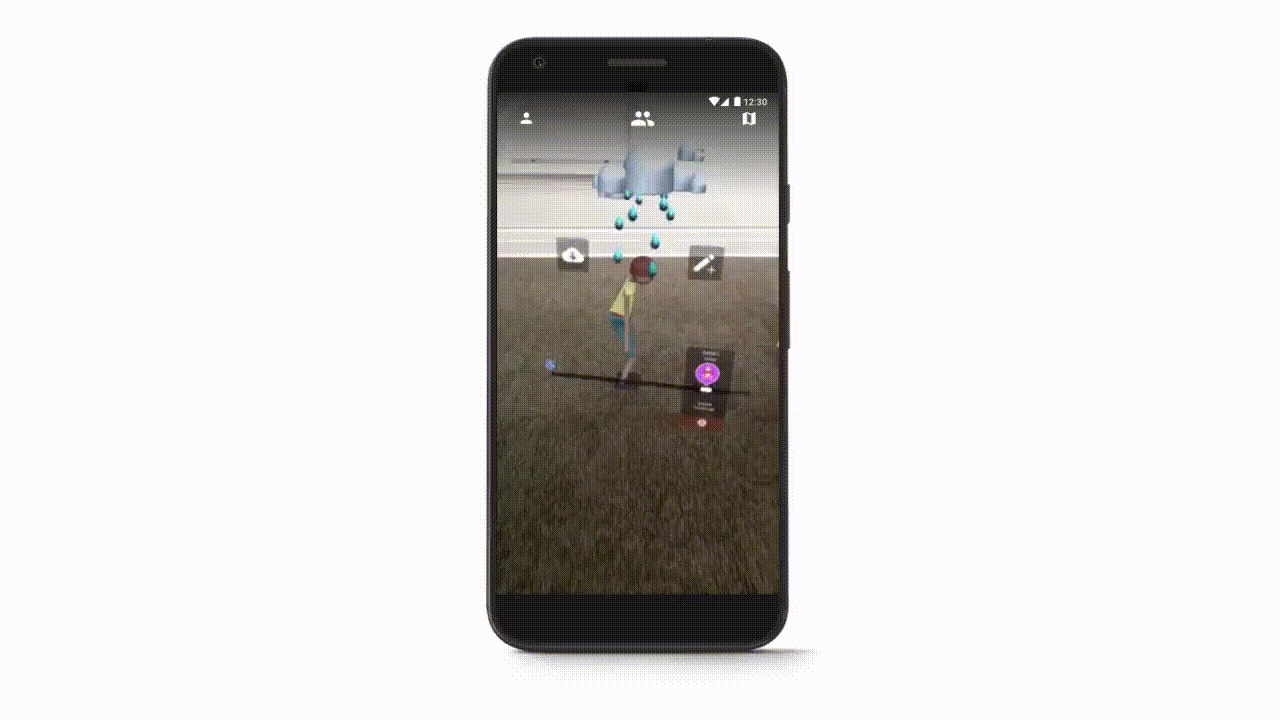In this nine week long sponsored project with SCAD in collaboration with Google Daydream, I worked as lead UX researcher and a concept developer during the ideation phase. Upon implementation, I was head of UI, focusing on visual and interaction design.
Challenge: Design an augmented reality application that mitigates chronic loneliness by developing community, authentic relationships, and self-expression using art.
Solution: Scapes is an application that allows users to express themselves through augmented reality art in order to build relationships and a connection to their community.
research
Upon receiving our prompt, we were cognizant of its complexities. Therefore, we deconstructed the prompt into tangible subproblems, which we tackled by establishing research goals.
Research goals
RESEARCH METHODOLOGIES
As UX Research Lead, I guided the team through nine different research methodologies to collect data on each facet of the prompt in order to answer our research goals.
Preliminary Survey
We sent out a preliminary survey to gain insight at a larger scale into how often our target users feel lonely and what types of situations perpetuate this feeling.
The survey questioned users about how they measure the authenticity of their current relationships, how inclined they are to joining new communities, and how often they experience loneliness.
Insight: Survey results revealed that many participants responded with uncertainty. We realized that this was due to the ambiguity of our terminology.
Intercepts
We conducted sixty intercepts with art and design students to understand their current mental model of art as a medium for self-expression and how their intimate social circles developed.
“I use art to understand the world around me. It helps me feel complete and understand myself.”
Many participants were still perplexed by the breadth of art-related events and semantics concerning intimacy, until we provided examples.
Insight: After gaining a sense of users' mental models, we used this data to scope our interview questions.
Interviews
We held sixteen interviews with SCAD students to obtain in-depth qualitative responses regarding the key aspects of the prompt.
Many participants measured the authenticity of a relationship by the amount of effort put forth, yet many feared reaching out first due to the risk of rejection.
“I know I need to reach out first, but I get intimidated because I don’t want to feel rejected.”
Insight: We learned that the majority of participants felt a disconnection from people, so we scaled our investigation to see if others felt this way within their communities.
Cultural Probe
We put out cultural probes posing the question of what it means to be a part of a community and the feelings associated with community in relation to how often the participants prefer to be alone.
Those who favored the presence of others related community to a positive entity larger than themselves, while those who preferred to be alone associated community with anxiety and onus.
“I need friends around me so I don’t fully realize how alone we really are.”
Insight: From the negative responses we received, we became aware that loneliness was beginning to tread the threshold of psychological disorders such as depression and anxiety. Therefore, we sought experts' opinions.
Expert Interviews
We conducted interviews with behavioral health and community experts to gain a professional perspective on the causes of loneliness, methods of coping, and approaches to building a strong community.
“Loneliness is a consequence of the lack of empathy, lack of desire and fear of rejection.”
“One must feel a degree of vulnerability in order to build trust with another.”
Insight: From our expert interviews, we realized that there are varying degrees of loneliness. Additionally, loneliness tends to be paradoxical in nature because one must feel vulnerable to build trust with another, yet vulnerability is what usually hinders these relationships. Therefore, small steps are key.
Pop-up Art Probe
We set up a drawing probe in Forsyth Park for people to visually express why they came to the park that day since a shared interest is the first step in building an authentic relationship.
Individuals who drew with friends tended to be more sociable with other strangers who were participating. Additionally, people were more inclined to join when they saw a group collectively adding to the canvas.
“I really enjoyed this. I didn’t know I had it [creative outlet] in me.”
Insight: Adding onto previous creations lowered the entry barrier for those who were timid and lacked an artistic background, making this event a creative outlet for all personality types.
Snapchat Probe
We shared a probe via Snapchat to explore the motivations behind using augmented reality as a medium for self-expression.
What is your favorite filter and why?
All participants replied with whimsical filters intending to make the viewer chuckle. They explained how filters deliberately disfigured facial features, which allowed users to embrace the peculiarity on a community level.
Insight: Augmented reality provided an outlet for self-expression by removing the fear of judgement and rejection.
insights
Archetypes
We learned throughout our research that anyone could experience varying degrees of loneliness depending on the context of their environment. By developing archetypes, we were able to identify pain points within each scenario.
Lone Wolves
Lone wolves shell themselves from the outside world due to their fear of not being accepted, turning their fears into a self-fulfilling prophecy.
Wallflowers
Wallflowers tend to be on the outskirts of their friendship circles because they struggle to open up, resulting in feeling ignored.
Social Butterflies
Social butterflies can feel lonely while surrounded by people because they focus on the breath of new relationships rather than the depth of existing ones.
Likes / Dislikes
By determining users' wants, behaviors, likes and dislikes, we prioritized certain needs that we would later design for.
model for mitigating loneliness
We developed a step-by-step process to help individuals who suffer from loneliness create authentic relationships. Lone wolves won't transform into social butterflies, but by identifying each archetype's entry point for mitigating loneliness, we were able to construct design principles to fit their needs.
From our findings, we learned that people who are truly lonely will view the world as hostile and equate reaching out to being rejected. This insight helped us realize that we were unable to design a comfort zone to those who feared reaching out. Additionally, a community is only as strong as the interpersonal connections within it. Therefore, we scoped the model down to three actionable pillars.
Reduce Anxiety
“Small low risk interactions are helpful for getting [people] used to conversation. Small talk isn’t immediately effective, but it opens the floor for deeper discussion.”
OPEN UP
“An element of vulnerability and intimacy must
be reached. [People] need to open themselves up.”
BUILD RELATIONSHIPS
“Depth, not breadth. Quality over quantity. That
is the essence of a true authentic relationship.”
Design Principles
ideation
EARLY ConceptS
Being generative as possible, we ideated disparate features that could bring people together through augmented reality and art. Later, we moved forward with Geo Grams and EastAR Eggs due to their feasibility with today's technology.
ARt Lenses: Filters gained by scanning artwork in the physical world to transforms the world into the respective art style.
Bat Signal: AR customizable signal on top of locations that serve as an open invitation for friends to join.
Geo Grams: Artwork and messages that can be sent to people for them to find in physical space.
EastAR Eggs: Collaborative AR art that is hidden in physical space where users can find and add to.
DESIGN, TEST, ITERATE
We held numerous testing sessions to ensure our product was usable and well-received. Some of these sessions evaluated proof of concept by walking users through various prototypes, while other sessions focused on AR versus UI specific features using a think-aloud cognitive walkthrough.
Prototype 1: Geo Grams Celebration
PROTOTYPE 2: EastAR Eggs Community Interests
Prototype 3: EastAR Egg Community Involvement
PROTOTYPE 4: CORE FUNCTIONALITY
MID-FI User Testing
Sitemap
user interaction cycle
final solution
Home Screen
Scapes’ home screen takes users right to the camera which serves as a viewfinder into the augmented world.
Here users can access their profile, collaborate with others, explore content through the map, or begin creating.
Creation Tool
Users will be prompted to look down where a tool belt will appear.
The tool belt is a balance of usability and flexibility in what users can create due to the categories it's comprised of such as, primitive shapes, particle effects, and featured items that integrate Google’s Poly Library.
Editing Tool
Users can add further edits to their creations by selecting one or more objects in the scene.
Some of these edits include scaling objects by pinching, grouping objects together, changing their color, recording sound, manipulating gravity, and adding a motion path to bring the creation alive.
Collaboration
Users can invite other to collaborate from their friends' list or a list of those around them.
During a collaboration session, remote creators are represented as a floating avatar. Users who are collaborating in-person gain access to each others’ saved tools through an expandable toolset.
Going Live
The going live feature enables users to have bite-sized interactions with the app if they’re unable to create in the moment.
This feature also offers social butterflies the opportunity to express themselves on a community scale while giving lone wolves and timid wallflowers content to tune into.
Share Map
Once a creation is complete, users can place it into the world for others to find and add to.
Users can place their creation in their current location or search for a specific location on the map. Users also have the authority to make this a public or private creation.
Explore Map
Users can explore the map to view livestreams, join open collaborations, and discover art created by the community around them.
Undiscovered art is represented by an abstract creation on the map and is immediately replaced by a model of the creation once it has been found in physical space, incentivizing users to find art.
Discovering creations
As users add onto a creation, a timeline is generated enabling users to see how the art has evolved over time.
While users can only add onto the latest version of the creation, they can still save and report previous edits made. By default, a placed creation disappears after three days unless continuously added too.
Adding to creations
Once a creation has been discovered, users can save it to their tool belt for future use or jump directly into a creation session to add onto it.
By choosing to add onto the creation, the tool belt will initiate with the current creation as a base for the user to keep building on top of.
final pitch
Upon completion of the project, six of us were chosen to present our solution to key stakeholders at Google's San Francisco headquarters.
© 2018. All Rights Reserved to Shabnam Kashani.


